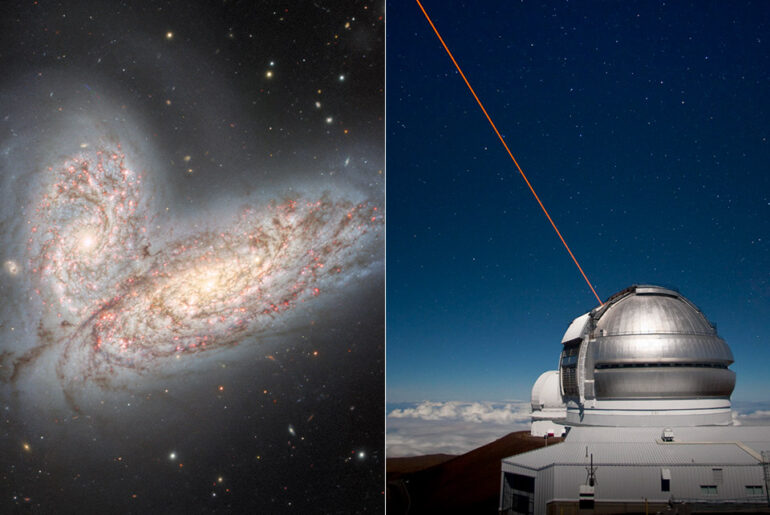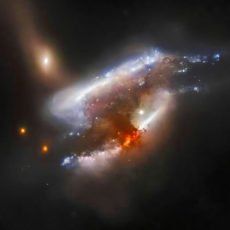
Researchers at NSF’s Gemini North telescope in Hawaii captured two galaxies colliding – NGC 4568 and NGC 4567 — entangled by their mutual gravitational field. These two will eventually combine to form a single elliptical galaxy in approximately 500 million years. You can also see the glowing remains of a supernova that was detected in 2020.
As NGC 4568 and NGC 4567 gradually join together and combine, their gravitational forces will battle it out, thus triggering bursts of intense stellar formation as well as spectacularly distort their once-dazzling structures. Over the course of millions of years, the galaxies are set to repeatedly swing past each other in ever-tightening loops, drawing out long streamers of stars and gas until a single spherical, galaxy emerges from the destruction. Now what you’ve seen galaxy collisions captured by Gemini North and the Hubble Space Telescope, we can only imagine how they would look when observed with the James Webb Space Telescope.
- BRIGHT, SHARP VIEWS ANYWHERE: Unlike many beginner telescopes, this quality refractor features fully coated glass lenses and a 70mm aperture for...
- PERFECT FIRST TELESCOPE FOR BEGINNERS: Designed for adults and kids to enjoy together, this beginner-friendly telescope sets up in minutes and...
- EASY NO-TOOL SETUP: No complicated assembly or tools needed. The full-height tripod and telescope tube set up in seconds and pack neatly into the...

By combining decades of observations and computer modeling, astronomers now have compelling evidence that merging spiral galaxies like these go on to become elliptical galaxies. It is likely that NGC 4568 and NGC 4567 will eventually resemble their more-mature neighbor Messier 89, an elliptical galaxy that also resides in the Virgo Cluster,” said the researchers.






